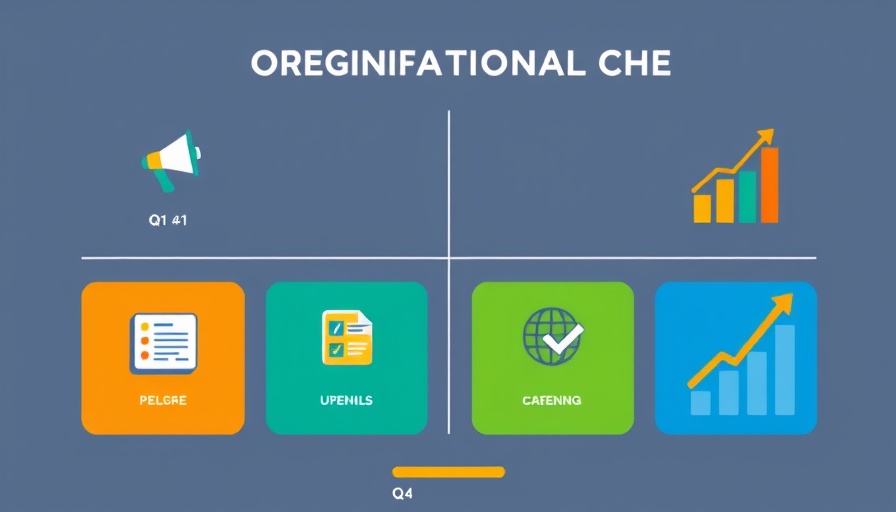
A Seasonal Approach to Marketing and Sales
Every business operates within a rhythm dictated by customer behavior and internal resources, yet many treat their marketing and sales strategy as a linear function. Instead, a cyclical process requires precise seasonal recalibration, much like how equipment undergoes maintenance to prevent future breakdowns. By aligning marketing and sales strategies with seasonal trends, companies position themselves not only for peak buying seasons but also for optimization during quieter periods.
Understanding Market Cycles: A B2C Perspective
For B2C companies, major shopping seasons drive the rhythm of the year. The fourth quarter, highlighted by events like Black Friday and Cyber Monday, represents significant opportunities for sales. To capitalize on these events, strategic and operational changes must be set in motion well before Q4 arrives. Early reallocations during Q1 should focus on rebranding, website redesigns, and introducing new products, establishing a strong foundation for impending demand.
Aligning for Success: B2B Marketing and Sales
B2B purchasing decisions often hinge on budget cycles, predominantly made in Q4 or Q1. To effectively meet these needs, marketing teams should focus on transformation efforts during Q2, providing ample time for testing and refinements before these peak periods. The third quarter should be leveraged for final adjustments in messaging and lead scoring, ensuring that all outbound and inbound efforts maximize pipeline generation.
Your Quarterly Marketing and Sales Maintenance Checklist
To keep sales and marketing efforts aligned, a quarterly maintenance checklist can be invaluable for both B2C and B2B models. Here’s a suggested overview of activities:
Q1: Foundation Building
- Data Cleanup and Auditing: De-duplicate CRM records, validate email addresses, and standardize field values.
- Marketing Automation Reset: Review nurture sequences and enhance automation workflows.
- Strategy Alignment: Identify the most effective channels and reaffirm business goals.
Q2: Fostering Growth
- Audience Engagement: Focus on list growth and content strategy refinements.
- Channel Optimization: Adjust marketing funnel strategies to accommodate upcoming campaigns.
- Metrics Review: Establish benchmarks for success and evaluate initial campaign performance.
Q3: Refining Messaging and Campaigns
- Lead Scoring Adjustment: Ensure scoring aligns with current business priorities.
- Final Campaign Review: Double-check all messaging and prepare for execution.
- Sales Team Training: Equip the sales team with new tools and insights to handle the upcoming surge.
Q4: Execution and Conversion
- Launch Campaigns: Execute major sales initiatives while closely monitoring results.
- Pipeline Management: Ensure alignment with sales processes to maximize conversion rates.
- Feedback Loop: Collect customer feedback to assess campaign efficacy post-launch.
The Benefits of a Seasonal Approach
Implementing a seasonal marketing and sales maintenance schedule not only encourages preparedness but also promotes agility and resilience. Companies that employ systematic seasonal strategies are better positioned to react to market fluctuations, leading to sustained ROI. This adaptive approach not only helps in meeting immediate results but also empowers long-term success.
Looking Ahead: Future Trends in Marketing
As businesses navigate through evolving consumer expectations and economic landscapes, understanding seasonal dynamics will become increasingly critical. Those who proactively adapt to these changes will remain competitive. Incorporating technology such as analytics platforms can provide real-time insights into market trends, informing strategy adjustments as needed.
By recognizing and acting upon the inherent rhythms of the market, business owners can cultivate more relationship-driven sales and marketing practices, translating to enhanced customer experiences and deeper engagement.
Investing in a seasonal marketing schedule isn't just about following the rhythms of the market but also about building a sustainable framework that leverages both high and low periods for maximum growth.
Ready to optimize your marketing and sales performance? Begin implementing a seasonal maintenance schedule today, and watch your business thrive through informed adaptations and strategic alignment.
 Add Row
Add Row  Add
Add 




Write A Comment